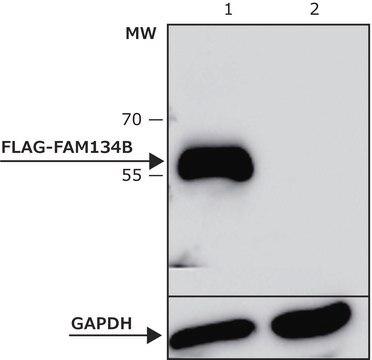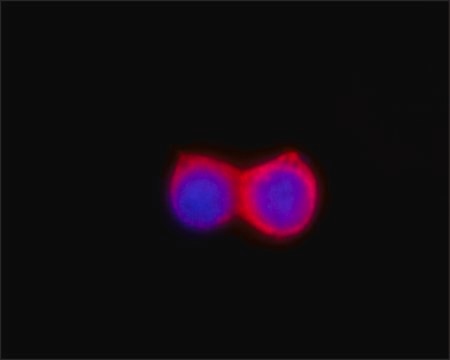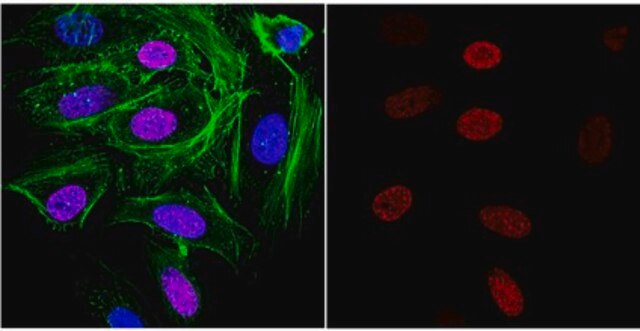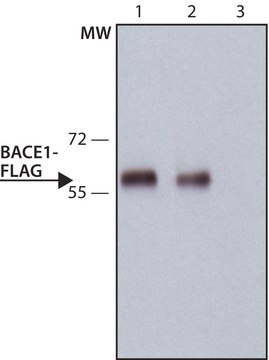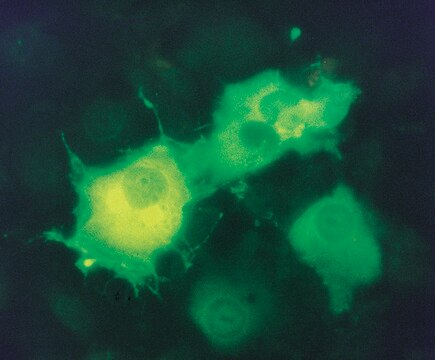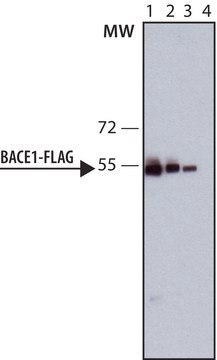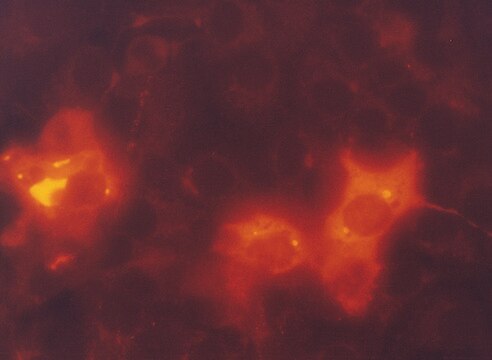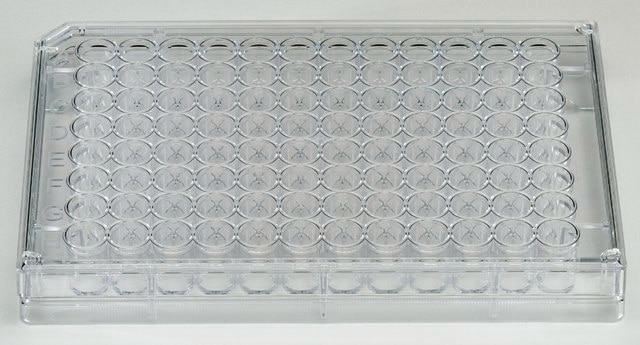MAB3118
Anti-DYKDDDDK (FLAG® epitope tag) Antibody, clone 2EL-1B11
ascites fluid, clone 2EL-1B11, Chemicon®
Synonym(s):
Anti-FLAG Antibody, FLAG Tag Antibody
About This Item
Recommended Products
biological source
mouse
Quality Level
antibody form
ascites fluid
antibody product type
primary antibodies
clone
2EL-1B11, monoclonal
species reactivity
vertebrates, E. coli
species reactivity (predicted by homology)
rat
manufacturer/tradename
Chemicon®
technique(s)
ELISA: suitable
immunocytochemistry: suitable
immunofluorescence: suitable
immunoprecipitation (IP): suitable
western blot: suitable
isotype
IgG1
shipped in
dry ice
target post-translational modification
unmodified
General description
FLAG® is a registered trademark of Sigma-Aldrich Biotechnology LP and Sigma-Aldrich Co.
Specificity
Immunogen
Application
A 1:1,000-1:5,000 dilution of a previous lot was used in IF.
Immunoprecipitation:
A 1:1,000-1:5,000 dilution of a previous lot was used IP on recombinant proteins.
ELISA:
A 1:1,000-1:5,000 dilution of a previous lot was used in Enzyme-linked immunosorbent assay on recombinant proteins.
Note: Does not require Ca++ for binding.
Immunoblotting:
on recombinant proteins
Optimal working dilutions must be determined by the end user.
Epitope Tags & General Use
Epitope Tags
Quality
Western Blot Analysis:
1:500 dilution of this lot detected Flag mTor on Flag-mTOR blot.
Linkage
Physical form
Storage and Stability
Handling Recommendations: Upon receipt, and prior to removing the cap, centrifuge the vial and gently mix the solution. Aliquot into microcentrifuge tubes and store at -20°C. Avoid repeated freeze/thaw cycles, which may damage IgG and affect product performance.
Analysis Note
Cells transfected with FLAG-tagged fusion vector
Other Notes
Legal Information
Disclaimer
Not finding the right product?
Try our Product Selector Tool.
WGK
WGK 1
Flash Point(F)
Not applicable
Flash Point(C)
Not applicable
Certificates of Analysis (COA)
Search for Certificates of Analysis (COA) by entering the products Lot/Batch Number. Lot and Batch Numbers can be found on a product’s label following the words ‘Lot’ or ‘Batch’.
Already Own This Product?
Find documentation for the products that you have recently purchased in the Document Library.
Customers Also Viewed
Our team of scientists has experience in all areas of research including Life Science, Material Science, Chemical Synthesis, Chromatography, Analytical and many others.
Contact Technical Service


